How to avoid post holiday regret in New Zealand
One in five Aussies have one major regret when travelling abroad, but there’s a good way to make sure it doesn’t happen to you.

Oh no, bro!
Aussie travelling abroad are returning home somewhat unsatisfied, according to new data released by Tourism New Zealand, as 20 per cent of us regret not seeking authentic experiences or asking for local recommendations.
According to a post-holiday survey of Aussies who have travelled anywhere in the last 12 months, 25 per cent bemoaned visiting overcrowded tourist spots and were left craving something further off the beaten path.
Twenty-four per cent also felt their trip lacked adventure, and instead rigid itineraries and a lack of spontaneity stifled them.
However, I was not one of them after a late April trip to New Zealand.
Far from the brightly-coloured jetboats, selfies at Auckland’s Sky Tower, skiing in Queenstown or cramming into Hobbiton, I took to some stunning South Island stunning regions often overlooked, but no less worth a visit.
And the authenticity, uncrowded experiences and local vibes were aplenty.
The wide-open West Coast
New Zealand’s West Coast region has one of the country’s largest geographical footprints, a roughly 520km long, 50km wide strip of coastline pinned to the Tasman Sea by the Southern Alps, spanning about a third of the length of the entire country.
Home to just 31,000 between just a handful of settlements, the region offers a sparse range of experiences like charming port towns, coastal subtropical rainforests or some of the most accessible glaciers in the world.
Kicking off my trip to the region, I opted to cross coast-to-coast across the Southern Alps from Christchurch by rail.

As we traversed the South Island from east to west, we were captivated by the majestic cliffs lining the river gorges, the vast high-altitude mountain plains, and the pristine lakes nestled amid the peaks.
The TranzAlpine route is a fusion of two railways. Starting in Christchurch, we embarked on the South Island Main Trunk line, crossing the expansive Canterbury Plains. But it was at Rolleston where the real magic began when the train veered north onto the Midland Line, tracing the footsteps of ancient MÄori trails and the visionary engineer Arthur Dobson.
The awe-inspiring passage through the Southern Alps evokes the empathetic imagination of MÄori traversing the peaks on foot and what challenges European settlers must have faced during construction and the ongoing battles to maintain this treacherous railway.
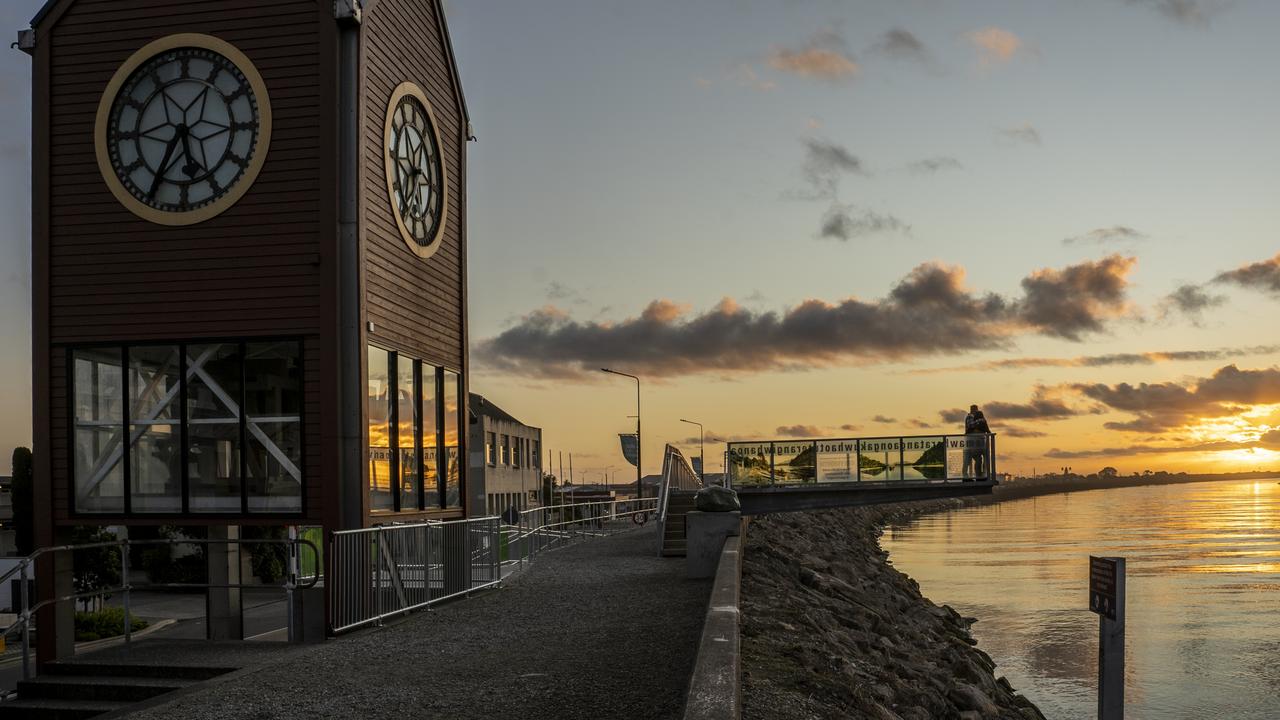
The journey across one of South Island New Zealand’s thinnest points shows a radical change in landscape – from the green farmland of the Canterbury Plains, to the epic peaks of the Southern Alps, to the drenched rainforests of the West Coast on approach to Greymouth.
With a trip length of about five hours, TranzAlpine reputation of being one of the “world’s best train journeys” is warranted by not only the views it offers, but also by the genuinely practical traverse it is for travellers.

I departed the TranzAlpine in the old coal mining port town Greymouth and went straight to Monteith’s Brewery, New Zealand’s first-ever brewery, for lunch.
The Brewery blends seamlessly into the small town, beachy vibe of Greymouth with beers, seafood and pub grub in a modern industrial setting to match that feel.
After lunch, I took the truly breathtaking drive north along the Great Coast Road with Explore West Coast to the pancake-shaped rock formations at Punakaiki.

Despite its remoteness, Greymouth and much of the West Coast has a significant and lucrative industrial history, with the area still well involved in coal, gold and dairy production.
Though today, the once fit-for-purpose industrial towns all along the Coast have warmly embraced the idea of tourists passing through – or even staying a while.
Punakaiki is an other-worldly experience as you stroll between finely layered rock formations and blowholes like no other I’ve seen.


I’m told the “Pancake Rocks” were formed 30 million years ago when tiny fragments of dead marine creatures and plants settled on the seabed about 2 km below the surface.
Immense water pressure then solidified them into layers. New Zealand’s constant seismic activity eventually lifted them out of the water, where the often brutal coastal conditions eroded the softer layers away, leaving what can only be described as “pancake stacks”.
If you’re in the area on high tide, you’ll even catch the mighty Tasman Sea swells generating some impressive blowhole displays.
I stayed at Rimu Lodge, the only 5-star lodge on the West Coast that night.
The rooms in the large B&B sit in the small settlement of Rimu, 10 minutes from the town of Hokitika, with rooms positioned perfectly to take in a sunrise over the glacier fed Hokitika River and the Southern Alps.
Back to the theme of us Aussies feeling like we’ve missed out on a local, authentic experience.

Just down the road from the lodge sits the Woodstock Hotel, a remnant from the days of once booming gold rush, when Hokitika was the busiest port in New Zealand and was even in the mix to be the nation’s capital.
In true small-town fashion, not only has the Woodstock been a pub over its years since 1865, but it’s also assumed the post office role and even as a local morgue.
The Woody – as it’s affectionately known by locals – was even rolled on beer barrels about 200 meters up a hill to where it now sits.
Today the Woodstock offers a “Real Kiwi pub experience” which I’d argue isn’t dissimilar to that of a classic country Aussie pub – in the best way possible.
Barnsey and Paul Kelly boomed away over the ambient sounds of locals’ laughter and pool balls colliding when I made the short walk down from Rimu for dinner.

In the corner on a small stage, amps, some old guitars, and a drum kit sat at the ready for when the local musos drop in for a Sunday jam session.
As was the case in most places on the West Coast, the food from its surprisingly extensive menu hadn’t come too far from the paddock (or in my case the hook) to the plate.
On tap was a significant range of tasty in-house beers.
I’m even told the owner even does a seasonal door knock around town for wild hops to keep the brews as fresh and exciting as possible.
The following day I got my first good look around Hokitika, guided by Rachel Wright at Hokitika Scenic Tours.
The local family-run venture from the area provided a bounty of intimate local insights, including stops at places you’d probably otherwise need to do some extra Googling to find.

“That’s what you get here – pretty much everyone here working anywhere is a long time local – and look around, we’re pretty proud of this,” Rachel told me as we drove towards the Alps through bright green paddocks full of well-fed dairy cows.
Our first stop, Hokitika Gorge, often written off as too big of a “detour” by most travellers.

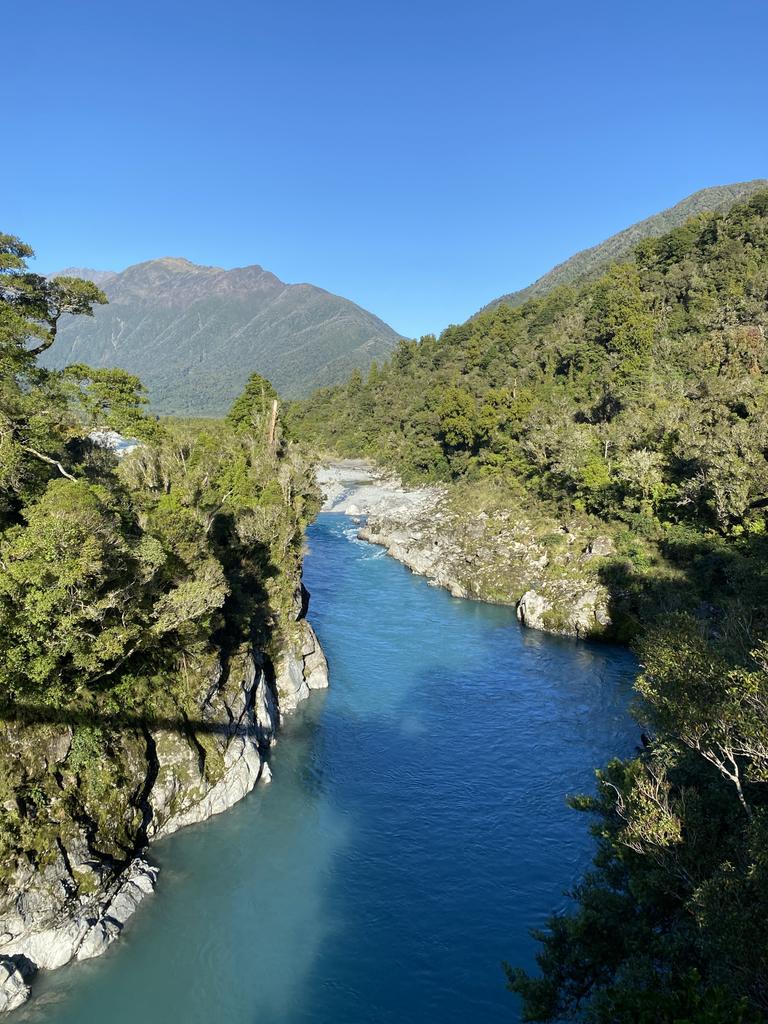
The incredible bottleneck at the foothills of the Southern Alps now plays host to a respectfully developed bush walk through lush native Rimu and podocarp forest to a rocky gorge with still turquoise blue water caused by the immense weight of the alpine glaciers crushing stones into a fine powder locals call ‘“rock flour”, so fine it remains suspended in the water.

The nearby West Coast Treetop walk also offers a great chance to immerse yourself in the ancient Rimu and Kamahi forest – but instead among the tree canopy on 20 metre-high platforms and a flying fox.
The town of Hokitika itself is well worth a stop while travelling the west Coast, both as one of the region’s most prominent centres with supermarkets and other stores which quickly become few and far between in this part of the country, and as a worthy tourist destination in its own right.
The small seaside settlement of 2,860 makes for a great coastal stop with expansive stony beaches primed for a sunset over the ocean should the weather fall in your favour.

Much of the township has leaned into the tourism focus with shops, food and experiences in abundance.
The nearby Arahura River, which enters the sea just north of Hokitika, is a traditional source of pounamu (greenstone), and the town offers some incredible experiences to engage with pounamu jewellery and artworks.
Bonz N Stonz is a boutique carving studio in Hokitika that offers an authentic and hands-on MÄori experience.
You’ll struggle to go anywhere in New Zealand without coming across locals adorned with a pounamu around their necks.
The stunning pieces, traditionally crafted by the person who intends to wear them, are seen in MÄori culture to represent ancestry, connection with the natural world, or personal attributes like strength, prosperity, love, and harmony.


And it’s a tradition MÄori are profoundly happy about sharing with all walks of life.
The Bonz and Stonz workshop is one of those front-facing sharing experiences where visitors can be guided through the art of pounamu by master carvers who show you carving skills and help you design a piece of your own to take home.
With clumsy, fat snags for fingers, there’s a good reason I took a job behind a desk and not something more hands-on or labour-intensive, but working with the pounamu on the water grinders, files and buffers at Bonz N Stonz left me feeling like maybe I’d missed my calling.
Manager Steve Gwaliasi told me people often leave impressed with their abilities to create something unique, which he believes comes from the power of the pounamu.
“I’ll give you some direction and an idea about the tools, and the rest will just come out,” he told me as we drew up a design on a piece of the jadestone.
He was right.
The end result was an awesome pendant I’m genuinely proud of.
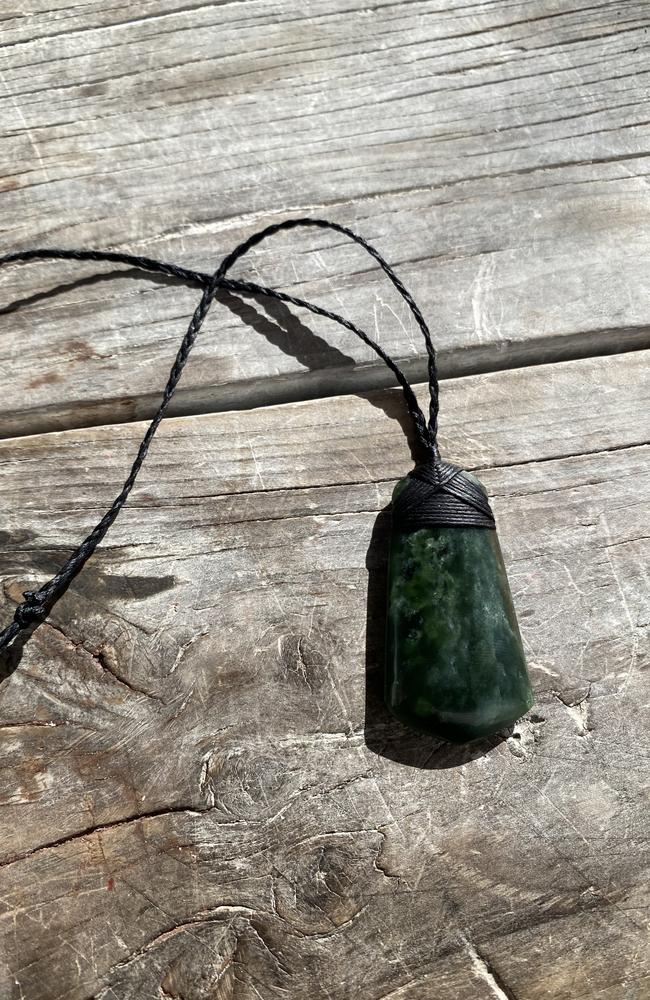
Steve said he couldn’t put his finger on why, but most people’s pieces come out as something genuinely representative of themselves.
“Big, round, strong – look at you!” he exclaimed as I handed him the finished product, unsure what he was insinuating but happy with my efforts nonetheless.
The last stop before I shot farther down the Coast for the next leg of my South Island adventure is a must-stop in Hokitika.
The Hokitika Sandwich Company is so popular, it has the biggest – or even only – only “invisible queue” on the Coast, and recently expanded across the nation to a second store in Christchurch.
The bread is baked fresh in-house with every ingredient of the American deli-style sandwiches sourced locally around the South Island.
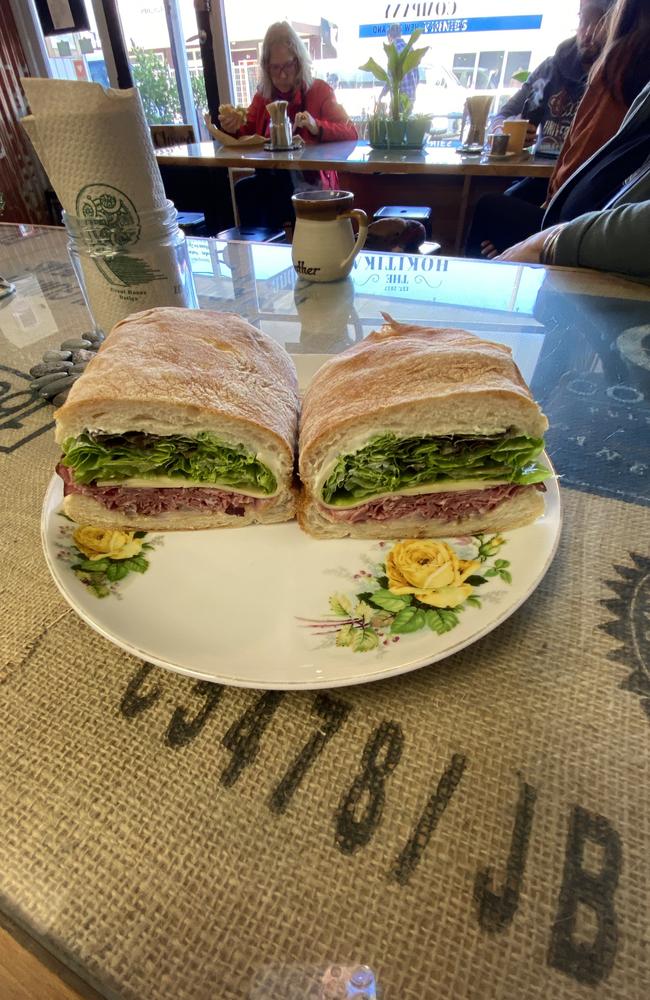
The New Yorker – corned beef, Swiss cheese, thousand island dressing and sauerkraut – is the owner Joseph Walker’s signature, and I can confirm it is to die for.
The sandwiches are so good that Joseph set up an online ordering system that amasses a lengthy “invisible queue” of locals on their lunch break.
So make use of the website if passing through, or just settle into the cosy shopfront.
Glacier country
About 1.5 hours down the Coast from Hokitika is the Franz Josef Glacier township, a base camp for the world-renowned glacier of the same name, and nearby, equally renowned Fox Glacier.
In the space of just a few blocks, the small settlement, almost 100 per cent dedicated to tourists, has plenty to entertain within itself.
While the glaciers are without a doubt the major drawcard, there are other close detours and experiences nearby.
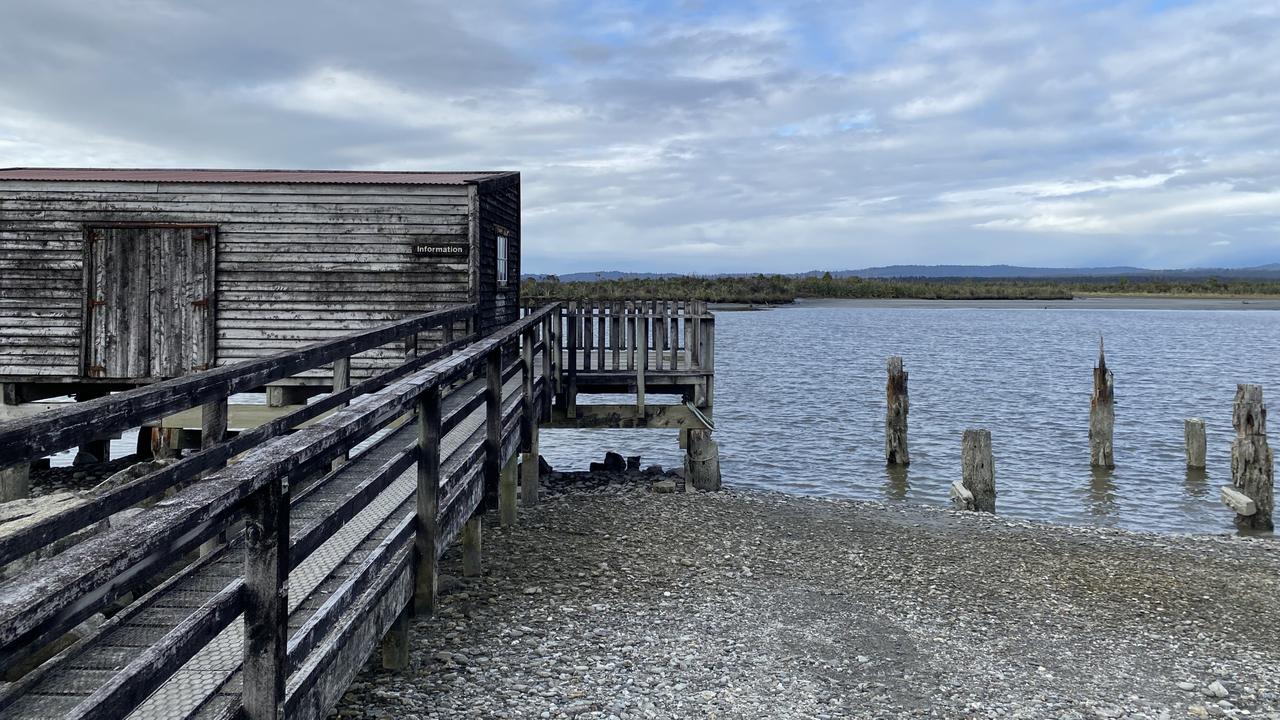
Okarito Lagoon, just 20 minutes from the Franz Josef settlement, is one of the best snapshots of the West Coast region’s wildly undulating geography and is well worth checking out.
Standing on the beach at Okarito, in one frame, you can see stunning tidal lagoon flats in the foreground, followed by lush native rainforest of the Westland Tai Poutini National Park, parts of Frans Josef and Fox glaciers, snow-capped peaks and an undisturbed view of the 3,724 metre tall Aoraki / Mount Cook – New Zealand’s highest mountain.
With its ocean inlet into the tidal lagoon, Okarito sprung to life in the mid-1860s as – you guessed it – another port, and its population soon swelled to about 4000.

Today it has little more than 50 houses and some gold rush-era relics – no bank, no post office, and no pub – with the 20 or so full-time locals left to live in one of the most peaceful joints in the country.
Baz and Gemma Hughes run one of the few businesses in town, and despite the tucked-away isolation, they reckon it’s a hugely popular one.
The Hughes family have lived in the tiny town since 2014 and own and operate Okarito Kayaks, which offers visitors to option to be guided or self-guided through the lagoon, which eventually weaves itself through the native forest and into alpine streams.
The super adventurous can even hire kayaks overnight for fireside beach camping miles from the nearest person – though Baz tells me you’ll be throughly scrutinised beforehand.

Baz makes a great coffee in his Kayak shack and says he doesn’t see himself leaving anytime soon.
He told me the perils that sunk industry in the town is what now make it so appealing for tourists.
“Everything has always struggled from that simple geographical of being so far from markets,” he told me, pointing to remnants of a failed retaining wall at the river mouth, which ended the town’s long-gone mining and farming industry.
However, he’s confident tourism has bucked the trend.
“On the other hand, it’s that isolation and peace that make this place so appealing. And now we survive on tourism.”
“And there’s always fish,” he laughed.

For most visitors, the majority of the West Coast is traditionally the journey to the glaciers, a well-established New Zealand travel destination.
The settlement hums through the day with the low frequency of choppers buzzing overhead as tourists are flown to walk atop the multi-millennia old ice.
For those not keen on the heli-hiking, the option is there to hike to the bottom of Franz Josef though there is a significant exclusion zone.

Interestingly, signage at the public access to the Franz Josef Glacier makes no point of hiding the fact that the multimillion-dollar tourism drawcard is under serious threat. Photos and infographics along the paths show its kilometres-long recession since it had begun being photo-documented in the late 1800s and early 1900s.


It is a poignant experience reading that you are standing at a point in the valley where the glacier once was 100 years ago while now needing to squint to glimpse its base miles further down the gorge.
In April this year, after an annual scientific flyover, scientists feared the worst.
“I’m seeing this beautiful part of our natural environment slipping through our fingers. And if you’ve experienced a glacier first-hand, they are absolutely breathtaking and mind-blowing and life-altering,” Andrew Lorrey, principal scientist at the research body National Institute of Water and Atmospheric Research (NIWA) and coordinator of the survey, declared in April.

NIWA found New Zealand’s glaciers are experiencing continuing ice loss and revealed a significant decrease in ice volume across the country’s glaciers.

The researchers used aerial photography and satellite imagery to assess the glaciers’ changes over the past four decades, which indicated New Zealand glaciers had lost approximately 18 per cent of their ice volume since the late 1970s.
The melting of glaciers is attributed to a combination of climate change and natural climate variability. It has significant implications for water resources, tourism, and the overall environmental landscape in New Zealand.
Despite the bleak outlook, the area still offers a breathtaking adventure.
The settlement has plenty on offer for those looking to wind down after a day around the glaciers.

An excellent pre-dinner tip is to head to Waiho Hot Tubs for a soak in a private, open-air, woodfire tub – each secluded in a patch of native shrub.
Despite its size, dining options are aplenty in Franz Josef.
Alice May is an immersive dining experience derived from the life and story of one of New Zealand’s most socially divisive figures in its history, Alice May Parkinson, who shot and killed her abusive lover in the early 1900s, and sparked a national feminist and socialist movement which eventually saw her freed from prison.
Snakebite Brewery on the settlement’s main strip also offers a range of craft beers with a well-coupled South East Asian menu.
And for those looking for something fitting the alpine atmosphere, the Monsoon Bar and Restaurant serves up home comforts with pizza, burgers and pub grub in a cosy ski-lodge-like setting with tunes, darts and pool tables to boot.
When I returned home from my New Zealand trip, I was hounded by mates who were keen to hear where I’d been and what I’d been up to.

But the West Coast is an authentic, charming region made great by friendly, proud locals and a radically changing landscape, all within a few hours’ drive.
I left with a sense of legitimate adventure, knowing I’d experienced a special part of the world that so many overlook, or are just unaware of.
For the 25 per cent who left their last New Zealand trip feeling a little regretful, South Island’s West Coast is worth considering for a mulligan.
And for those who may not have considered it or even heard of it – definitely put it on your radar.
This writer travelled to Christchurch as a guest of Tourism New Zealand






